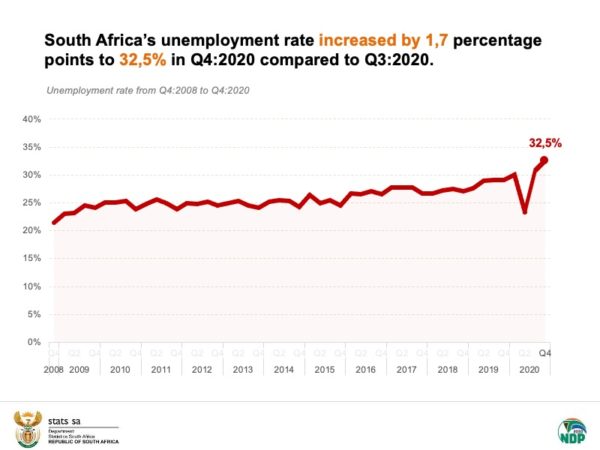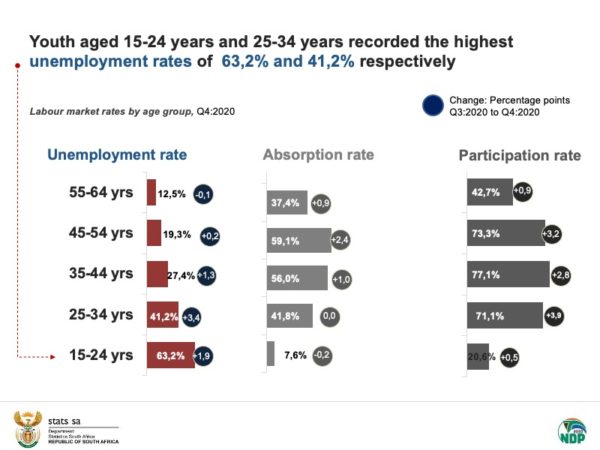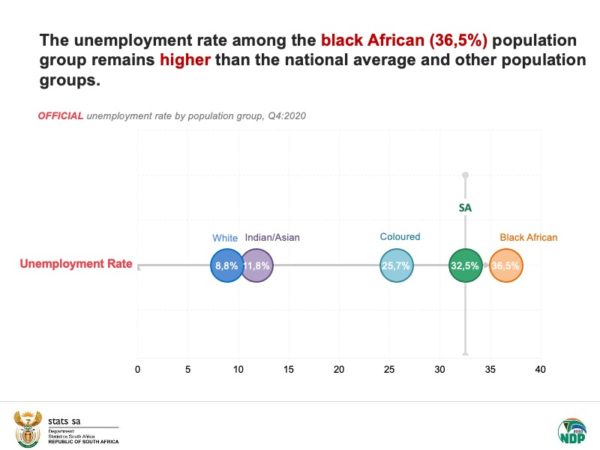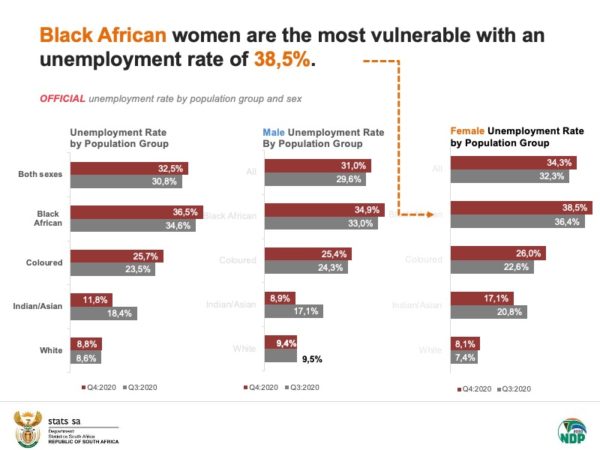The unemployment rate in South Africa increased to 32.5% in the fourth quarter of 2020, marking a 1.7% rise according to results from the Quarterly Labour Force Survey (QLFS) by Statistics SA. This is the highest since the start of the QLFS in 2008.
This increase means that 333 000 more people were unemployed, equalling a total of 15-million unemployed persons in the fourth quarter of 2020.

The number of unemployed persons also increased by 701 000 to 7.2-million compared to the third quarter of 2020, resulting in an increase of 1-million (up by 4.9%) in the number of people in the labour force.
The number of discouraged work-seekers increased by 235 000 (8.7%), and the number of people who were not economically active for reasons other than discouragement decreased by 1.1 million (7.4%) between the two quarters, resulting in a net decrease of 890 000 in the not economically active population.
The movement was proportionately more towards the unemployed than for the employed, which resulted in a significant increase of 1.7 percentage points in the official unemployment rate to 32.5% – the highest since the start of the QLFS in 2008.
The unemployment rate according to the expanded definition of unemployment decreased by 0.5 of a percentage point to 42.6% in quarter 4 2020 compared to quarter 3 2020.
Youth aged 15-24 years and 25-34 years recorded the highest unemployment rates of 63,2% and 41,2% respectively.

Approximately 3,1 million (29,8%) out of 10.3-million young people aged 15-24 years were not in employment, education or training (NEET). The overall NEET rate declined by 2.2 percentage points in Q4:2020 compared to Q4:2019.
The unemployment rate among the black African (36.5%) population group remains higher than the national average and other population groups. Black African women are the most vulnerable with an unemployment rate of 38.5%.
Irrespective of gender, the black African and coloured population groups remain vulnerable in the labour market.


The survey also revealed that employment increased in all sectors in the fourth quarter of 2020. Formal sector employment increased by 189 000 (1.8%); Informal sector employment by 65 000 (2.6%); Private households by 76 000 (6.8%), and employment in Agriculture increased by 2 000 (0.3%).
Employment increased in all industries, except Finance and Mining. The industries which gained the most jobs were Community and social services (170 000) and Construction (86 000). Compared to quarter 4 2019, employment contracted in all industries. Most job losses were observed in Finance (256 000), Community and social services (241 000) and Manufacturing (230 000).
Read the full study here: P02114thQuarter2020
Picture: Pexels






